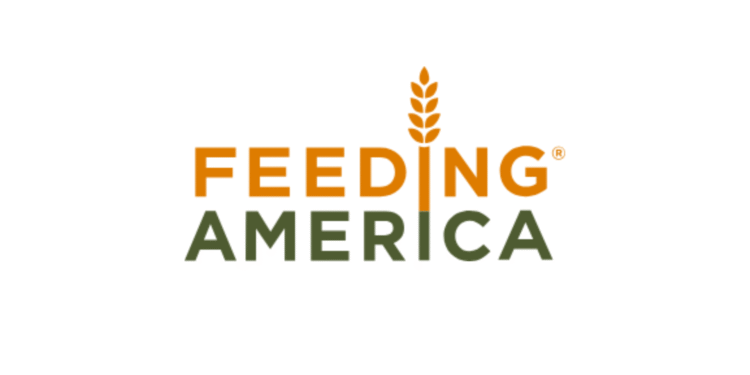What if the most powerful solution to hunger wasn’t just about food, but about building stronger communities?
Feeding America stands as the nation’s largest hunger-relief organization with a bold vision. They work toward an America where no one goes hungry.
This network spans over 200 food banks and 60,000 partner agencies. Last year, they provided 5.2 billion meals to millions of people.
Their approach goes beyond immediate food distribution. They address systemic issues that create food insecurity.
For four decades, this organization has evolved its strategies. They make a tangible difference in lives across every community.
Key Takeaways
- Feeding America is the largest hunger-relief organization in the United States
- Their vision is an America where no one experiences hunger
- They operate through a massive network of food banks and partner agencies
- The organization provided 5.2 billion meals to people in need last year
- Their work addresses both immediate needs and systemic causes of hunger
- They have been fighting hunger for over 40 years
- Their impact creates meaningful difference in communities nationwide
What Is Feeding America’s Mission?
At its heart, this organization aims to create a nation free from hunger. Its vision drives every action and program.
The mission extends far beyond handing out meals. It tackles the root causes that leave people without enough food.
Efforts include fighting food waste and boosting food security. They also push for laws that help those in need.
This work highlights social and systemic barriers. The goal is lasting change, not just quick fixes.
Programs focus on entire communities, not just individuals. This approach builds stronger, healthier neighborhoods.
Every initiative connects to broader social justice issues. The mission guides all they do, from local aid to national advocacy.
The Feeding America Network: A Nationwide Force Against Hunger
Across America, a powerful system mobilizes resources to combat food scarcity. This network represents the operational backbone of hunger relief efforts nationwide.
More than 200 food banks form the core distribution hubs. They receive, store, and redistribute millions of pounds of nutritious food.
Food Banks and Partner Agencies
Local food banks serve as critical community anchors. They work with over 60,000 partner agencies including pantries and meal programs.
These partners become direct access points for families facing need. They ensure resources reach neighborhoods efficiently.
The process begins with bulk food procurement. Teams then sort, package, and distribute items through the network.
Feeding America Eastern Wisconsin demonstrates this system’s reach. They serve 35 counties through 400 partner organizations.
Statewide Food Bank Associations
Twenty-one regional associations coordinate efforts across states. They optimize distribution and share best practices.
This regional approach addresses unique local challenges. It ensures appropriate resources reach each community.
The network provides nutritious options for people experiencing food insecurity. Children and families receive vital support through this system.
Last year, this infrastructure distributed billions of meals. It represents America’s most comprehensive hunger response network.
Responding to Unprecedented Need: COVID-19 and Beyond
The pandemic created a perfect storm for food insecurity. Job losses and economic shutdowns pushed millions into facing hunger for the first time.
This organization responded with remarkable speed. They scaled operations to meet the surging need across communities.
In 2020, they distributed 6.1 billion meals. This marked a 44% increase from the previous year.
Food banks implemented new safety protocols. Drive-through distributions and contactless delivery became standard.
Many families struggled with school closures and lost income. Parents often skipped meals so their children could eat.
The economic impact continues beyond the health crisis. Many neighbors facing hunger still need support today.
Lessons from the pandemic response now guide ongoing operations. The network maintains readiness for sustained increased need.
Collaboration with partners ensured efficient emergency response. This teamwork continues addressing food insecurity challenges.
The organization recognizes recovery takes time. Their commitment to ending hunger remains stronger than ever.
Key Initiatives and Programs
Strategic programs form the backbone of effective hunger relief efforts nationwide. These initiatives target specific needs across different demographics.
They complement emergency food distribution with long-term solutions. Each program addresses unique nutritional challenges.
Federal Nutrition Program Partnerships
This organization maintains the largest nonprofit partnership with USDA nutrition programs. Government collaboration multiplies their impact significantly.
USDA foods composed 2.4 billion meals in 2020 alone. This partnership represents a massive scale of nutritional support.
These programs provide consistent access to quality food. They form a critical component of the hunger relief ecosystem.
Summer Meal Sites and Afterschool Programs
Summer meal sites ensure children receive nutritious food during school breaks. These programs fill critical gaps when school meals aren’t available.
Afterschool meal programs support vulnerable children after classes end. They provide essential nutrition during afternoon hours.
Senior meal programs address food insecurity among elderly community members. These initiatives recognize the unique needs of older adults.
SNAP Enrollment Assistance
This network operates one of the country’s largest SNAP enrollment assistance programs. They help people access vital government nutrition resources.
Teams assisted over 300,000 people nationwide with SNAP enrollment. This support creates lasting food security for families.
These initiatives provide essential resources beyond emergency food distribution. They represent strategic partnerships with government nutrition programs.
Programs address specific nutritional needs of different demographics. The community-based approach ensures local relevance and effectiveness.
The Impact of Feeding America: By the Numbers
Numbers tell a powerful story about hunger relief efforts across the nation. The scale of this work reaches millions through coordinated action.
Last year, this network provided 5.2 billion meals to tens of millions of people. This represents one of the largest hunger relief operations nationwide.
During the peak COVID-19 response in 2020, the effort grew significantly. Teams distributed an extraordinary 6.1 billion meals to meet surging need.
Regional impact shows deep community penetration. Feeding America Eastern Wisconsin distributed over 40 million pounds of food last year.
This translates to real support for neighbors facing difficult circumstances. The numbers reveal both the scale of need and the response capacity.
In many served communities, 1-in-8 people experience food insecurity. This statistic highlights the ongoing challenge across regions.
Children receive vital nutrition through various programs. Meal initiatives ensure young people have access to healthy food options.
Year-over-year data shows consistent growth in addressing hunger needs. This quantitative measurement guides future strategic planning.
Resource allocation follows evidence-based approaches. The numbers help optimize distribution across different regions.
Every statistic represents real difference in people’s daily lives. From emergency support to long-term solutions, the impact continues growing.
Addressing Root Causes and Systemic Barriers
True change requires digging deeper than emergency meal distribution. The organization tackles underlying issues that create food scarcity.
Forty years of experience provides unique insight into hunger patterns. This knowledge helps identify communities most affected by food insecurity.
Research initiatives investigate why certain populations face greater hunger risks. They examine economic, social, and policy factors that limit food access.
This organization understands that hunger connects to broader inequality issues. Their approach considers racial and economic disparities in food systems.
Local presence combined with national reach creates powerful assessment capabilities. Teams identify neighborhoods where people experience the greatest need.
Advocacy work focuses on changing policies that perpetuate hunger cycles. They push for legislation that supports families and children facing food challenges.
Educational programs raise awareness about systemic barriers to nutrition. These initiatives help communities understand the complex causes behind food insecurity.
Collaboration with local groups ensures culturally appropriate solutions. This partnership approach respects community knowledge and experience.
The strategy extends beyond immediate relief toward sustainable change. Long-term thinking addresses the root causes rather than just symptoms.
This comprehensive method creates lasting impact for neighbors experiencing hunger. It represents the future of effective hunger relief work.
How You Can Help Make a Difference
Every action creates meaningful change in the fight against hunger. Your support transforms directly into meals for those facing food insecurity.
Financial contributions power the entire operation. Donations fund meal programs and ensure access to nutritious food.
Donating to Support the Mission
Your financial gift makes an immediate impact. It helps provide meals for families and children experiencing need.
Every dollar contributes to community food security. Donations support both emergency relief and long-term solutions.
Volunteering Your Time
Volunteers form the backbone of daily operations. They sort, pack, and distribute food to neighbors.
Both individuals and groups can participate. Multiple weekday shifts are available at Milwaukee and Appleton campuses.
Drivers play a critical role in delivery. They ensure food reaches people where it’s needed most.
Your time creates tangible difference in your community. Volunteering directly helps children and families facing hunger.
Beyond donations and volunteering, you can organize food drives. Advocacy efforts also support systemic change.
Every contribution matters in creating a hunger-free nation. Your support transforms into real help for people in need.
Conclusion: Working Toward an America Without Hunger
Creating a hunger-free nation requires more than just food distribution – it demands systemic change and collective action. This organization’s comprehensive approach addresses both immediate needs and root causes of food insecurity.
Solving hunger extends beyond food banks alone. It requires strong partnerships with lawmakers to ensure robust federal nutrition programs. This collaboration helps ensure no neighbors go to bed hungry.
Continued public support sustains this vital mission. Your involvement helps provide meals to children and families facing hunger challenges. Together, we can build a future where all people have access to nutritious food.
Progress continues through community commitment and policy advocacy. The transformative power of collective effort brings us closer to an America where hunger no longer exists.
FAQ
What is the main goal of Feeding America?
The organization aims to end hunger across the United States by supplying meals through a nationwide network of food banks and community programs.
How does Feeding America distribute food to those in need?
They work with over 200 food banks and 60,000 partner agencies, including pantries and meal programs, to provide nutritious food to families and individuals.
How did the COVID-19 pandemic affect hunger in America?
The crisis significantly increased food insecurity, with millions more people, including children, requiring assistance to access meals and essential resources.
What types of programs does Feeding America support?
They back initiatives like federal nutrition partnerships, summer meal sites, afterschool programs, and SNAP enrollment help to address hunger at multiple levels.
Can I volunteer with Feeding America?
Yes, volunteering opportunities are available at local food banks and agencies. You can donate your time to sort food, assist at distributions, or support community outreach.
How can I donate to support their mission?
Financial contributions can be made online, and many local food banks also accept food donations. Every dollar helps provide several meals to neighbors facing hunger.





